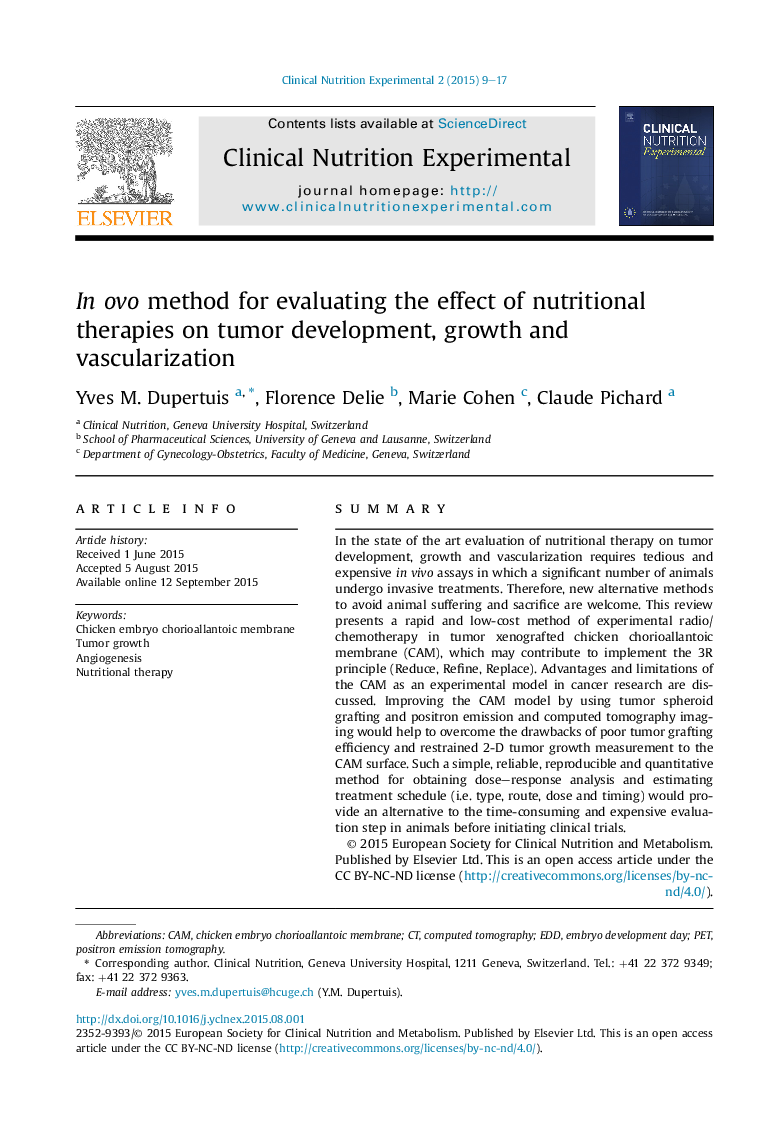| Article ID | Journal | Published Year | Pages | File Type |
|---|---|---|---|---|
| 2692721 | Clinical Nutrition Experimental | 2015 | 9 Pages |
SummaryIn the state of the art evaluation of nutritional therapy on tumor development, growth and vascularization requires tedious and expensive in vivo assays in which a significant number of animals undergo invasive treatments. Therefore, new alternative methods to avoid animal suffering and sacrifice are welcome. This review presents a rapid and low-cost method of experimental radio/chemotherapy in tumor xenografted chicken chorioallantoic membrane (CAM), which may contribute to implement the 3R principle (Reduce, Refine, Replace). Advantages and limitations of the CAM as an experimental model in cancer research are discussed. Improving the CAM model by using tumor spheroid grafting and positron emission and computed tomography imaging would help to overcome the drawbacks of poor tumor grafting efficiency and restrained 2-D tumor growth measurement to the CAM surface. Such a simple, reliable, reproducible and quantitative method for obtaining dose–response analysis and estimating treatment schedule (i.e. type, route, dose and timing) would provide an alternative to the time-consuming and expensive evaluation step in animals before initiating clinical trials.
